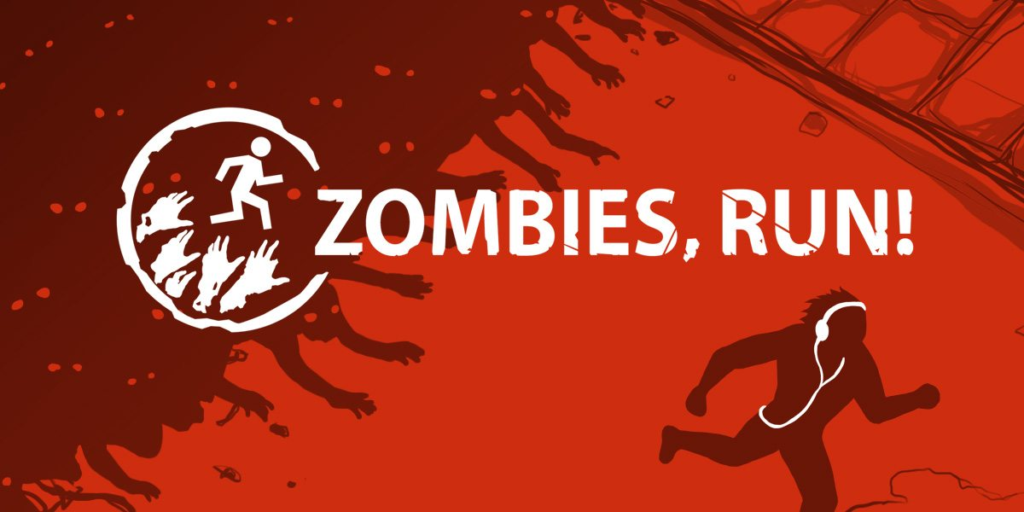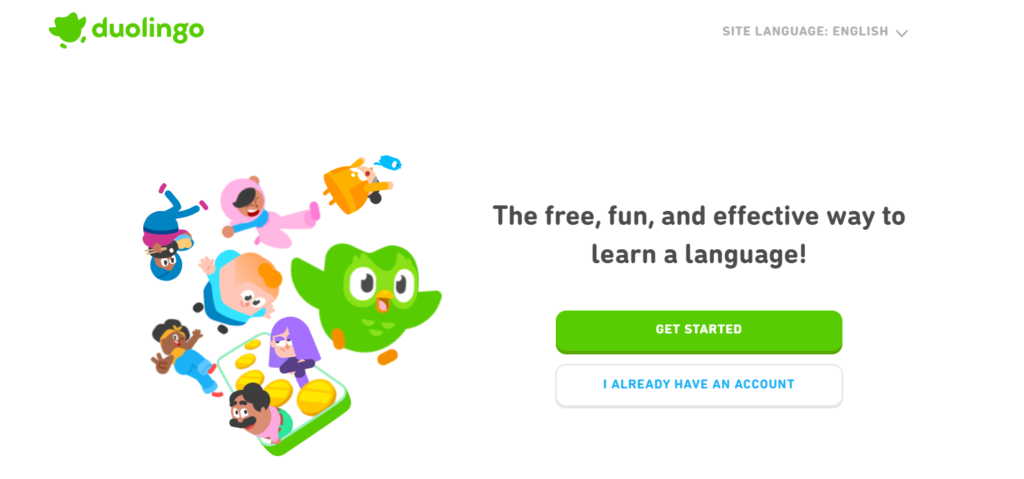Gamification directly relates to human psychology. Learn how gamification impacts human psychology and behavior with real-world business examples.
Introduction
Have you ever found yourself completely absorbed in a mobile game, spending hours trying to beat a level or collect all the items? Or maybe you’ve been hooked on a fitness app, striving to earn badges or climb the leaderboard? If so, you’ve experienced the power of gamification.
Gamification is the application of game design elements and principles in non-game contexts. It’s about taking what makes games fun and engaging and applying it to everyday activities. This can be anything from exercise routines and educational programs to workplace training and marketing campaigns.
But what makes gamification so effective?
Why do we get so hooked on these systems, even when the tasks themselves might not be inherently exciting?
The answer lies in the fascinating world of psychology.
By understanding how our brains are wired, gamification can tap into powerful motivators and drive us to achieve more.
In this comprehensive guide, you will learn the psychology of gamification and explore the scientific principles that explain why it works. We’ll uncover the secrets behind user engagement and discover how game mechanics can be used to influence behavior.
Why Gamification Works
Games have been a fundamental part of human culture for Gen Z. They provide a fun and engaging way to learn new skills, test our abilities, and socialize with others. But the appeal of games goes beyond entertainment. There’s a lot of science behind the scenes that explains why we find them so rewarding.
One key concept in understanding the psychology of gamification is the difference between intrinsic and extrinsic motivation.
Intrinsic motivation refers to the desire to do something for the inherent satisfaction it brings. We engage in activities because we find them enjoyable or fulfilling, like playing a game for the pure fun of it.
Extrinsic motivation, on the other hand, comes from external rewards or pressures. We do something because it leads to a desired outcome, such as getting a good grade or winning a prize.
Gamification excels at cultivating both types of motivation. Adding challenge, surprise, and storytelling elements can make tasks inherently more enjoyable. At the same time, it often provides extrinsic motivators like points, badges, and leaderboards, which give users a sense of accomplishment and social comparison.
Gamification and Dopamine
Another powerful force at play in gamification is the dopamine reward system. Dopamine is a neurotransmitter in the brain associated with pleasure, reward, and motivation.
When we achieve a goal in a game, whether completing a level or earning a point, our brain releases dopamine. This creates a positive feedback loop, making us want to repeat the behavior to experience that pleasurable feeling again.
Gamification cleverly leverages this system by providing users with small, achievable goals and rewarding them for completing them. This constant dopamine drip keeps users engaged and motivated to keep playing or completing tasks.
Finally, gamification taps into some fundamental human needs. We all desire achievement, a sense of accomplishment that comes from mastering a skill or completing a task. Gamification allows users to feel successful by setting clear goals and providing feedback on progress.
Humans are also social creatures with a natural craving for recognition and competition. Leaderboards and social features within gamified systems allow users to compare themselves to others and strive for a higher position. This healthy competition can further fuel motivation and engagement.
Beyond achievement and competition, gamification can also address other human needs, like
- competence, the desire to feel skilled and capable
- self-expression, the desire to showcase our unique abilities
Gamification can create a more enriching and engaging experience by providing opportunities for mastery and personalization.
Gamification Mechanics That Drive User Behavior
Now that we’ve explored the psychological underpinnings of gamification, let’s look into the specific mechanics that game designers use to create engaging and motivating experiences. These mechanics are the building blocks of gamification and can be adapted to fit a wide range of contexts.
Points, Badges, and Leaderboards
One of the most common gamification mechanics is using points, badges, and leaderboards. Points are a simple way to quantify progress and achievement. They provide users with immediate feedback on their performance and motivate them to keep striving for a higher score.
Badges, on the other hand, are virtual symbols that represent specific accomplishments. Earning a badge gives users a sense of pride and recognition for their efforts. They also serve as a way to track progress and showcase mastery of a particular skill.
Leaderboards take things a step further by introducing an element of social comparison. Users can see how they stack up against others and are motivated to climb the ranks. This healthy competition can be a powerful driver of engagement as users strive to outperform their peers.
Here are some things to keep in mind when using points, badges, and leaderboards:
- Make them relevant: Ensure that points, badges, and leaderboards are tied to meaningful accomplishments within the context of your gamified experience.
- Find the right balance: Avoid overwhelming users with many points or badges. Leaderboards should be designed to motivate, not discourage.
- Consider visibility: Badges and leaderboards can be displayed publicly or privately, depending on the desired outcome.
Gamification Example: Duolingo
Duolingo, the popular language learning app, is a masterclass using points, badges, and leaderboards. Users earn points for completing lessons and exercises and can unlock badges to achieve milestones. The app also features leaderboards that allow users to see how they compare to their friends and other learners. This gamification strategy has motivated users to stick with their language learning goals.
Levels and Progression
Another powerful WordPress gamification mechanic is the use of levels and progression. By providing users with a clear pathway to follow, gamification creates a sense of accomplishment and keeps users motivated to move forward.
Milestones play a crucial role in level progression. They are smaller, achievable goals that are stepping stones to higher levels. Completing milestones provides users with a sense of progress and keeps them engaged in the process.
Here are some key considerations for using levels and progression effectively:
- Start simple: The initial levels should be easy to complete, allowing users to build confidence and get familiar with the system.
- Gradually increase difficulty: As users progress, the challenges should become more complex to keep them engaged.
- Provide clear feedback: Users should always be aware of their progress and how close they are to reaching the next level.
Case Study of Gamification: Khan Academy
The free online education platform Khan Academy uses levels and progression to keep students engaged. Students who complete lessons and answer questions correctly earn points and badges. They also progress through a mastery system, unlocking new topics and challenges as they demonstrate understanding.
The above example shows a clear progression path that motivates students to keep learning and mastering new concepts.
Challenges and Quests
Challenges and quests introduce a sense of purpose and accomplishment into gamified experiences. They provide users with specific goals to achieve, often within a set timeframe. Completing challenges can unlock new rewards, levels, or content, motivating users to participate.
Quests take challenge mechanics a step further by incorporating elements of storytelling and narrative. They often involve a series of tasks or puzzles that users need to solve to progress through a storyline. This narrative element adds intrigue and makes the experience more immersive.
Here are some key considerations for using challenges and quests effectively:
- Align with user goals: Ensure that challenges and quests are relevant to the overall goals of your gamified experience.
- Variety is key: Offer a mix of challenges with varying difficulty levels to cater to different user preferences.
- Keep it achievable: Challenges should be challenging but achievable to maintain user motivation.
- Storytelling matters: Craft engaging narratives for quests to make the experience more immersive.
Case Study: Nike Run Club

The Nike Run Club app effectively uses challenges and quests to motivate users to stay active. The app offers a variety of running challenges, such as distance-based challenges or weekly running streaks. Users can also participate in themed quests that involve running specific routes or completing a virtual race.
These challenges and quests give users a sense of purpose and accomplishment, keeping them engaged with their fitness goals.
The Power of Narrative and Storytelling
While not always explicitly included, storytelling is crucial in many gamified experiences. By weaving a narrative thread into the gameplay, gamification can create a more immersive and engaging experience. Stories can provide context for challenges and quests, give users a sense of purpose, and foster a connection with the game world.
Here are some ways storytelling can be incorporated into gamification:
- Character development: Allow users to create or customize avatars that represent them within the gamified experience.
- World-building: Create a virtual world or environment for users to explore and interact.
- Goal-oriented narrative: Frame challenges and quests within a larger narrative context, giving users a sense of purpose in their actions.
Case Study: Zombies, Run!

Zombies, Run! is a fitness app that takes storytelling to a new level. The app uses an immersive narrative where users become runners tasked with completing supply runs for a fictional community threatened by a zombie apocalypse.
As users run in the real world, they listen to audio stories that unfold the narrative and provide instructions for running challenges. This unique blend of storytelling and gamification has incredibly motivated users to get moving.
Implementing Effective Strategies for Gamification
So far, we’ve explored the psychological needs of gamification and the various mechanics that drive user engagement. But how do you actually implement these strategies effectively? Here are some key considerations:
Identifying the Right Audience and Goals
The first step in successful gamification is clearly defining your target audience and desired outcomes. Who are you trying to engage with your gamified experience? What specific behaviors are you hoping to encourage?
Once you understand your audience and goals, you can tailor your gamification strategy accordingly.
For example, if you’re targeting young children and aiming to improve their math skills, you might use a more playful and points-based approach.
On the other hand, if you’re trying to motivate employees to complete online training modules, you might focus on leaderboards and badges for recognition.
Here are some questions to ask yourself when defining your audience and goals:
- Who are you trying to engage with your gamified experience?
- What specific behaviors do you want to encourage?
- What are the challenges or pain points of your target audience?
- How can gamification address these challenges and make the experience more enjoyable?
Finding the Right Balance: Fun vs. Frustration
One of the biggest challenges in gamification is striking the right balance between fun and frustration. If the challenges are too easy, users will get bored. Conversely, users might get discouraged and give up if they’re too difficult.
The key is to ensure that challenges are achievable but still provide a sense of accomplishment. Start with easier tasks and gradually increase the difficulty as users progress. Provide clear feedback and guidance throughout the experience to help users stay on track.
Here are some tips for finding the right balance:
- Start with a strong foundation: Ensure the core mechanics of your gamified experience are enjoyable and engaging before adding complexity.
- Offer a variety of challenges: Cater to different user preferences by providing challenges with varying difficulty levels.
- Provide clear instructions and feedback: Users should always know what to do and how they progress.
- Don’t be afraid to adjust: Monitor user behavior and be willing to adapt your gamification strategy based on feedback and data.
Tracking and Measuring Success
An important aspect of successful gamification is tracking and measuring the effectiveness of your strategies. This involves collecting data on user engagement, such as completion rates, time spent on tasks, and participation in challenges.
By analyzing this data, you can identify what’s working and what’s not, allowing you to refine your gamification approach.
Here are some metrics to track when measuring the success of your gamification strategy:
- User engagement: Track metrics like completion rates, time spent on tasks, and frequency of logins.
- Goal achievement: Are users achieving the desired outcomes due to the gamification?
- User feedback: Conduct gamified surveys or gather user feedback to understand their experience.
- Cost-effectiveness: Compare the cost of implementing gamification to its benefits.
By continuously monitoring your gamification strategy, you can ensure it remains effective in driving engagement and achieving your desired goals.
Real-Life Examples of Gamification in Action
Gamification has broken through various industries, proving its effectiveness in driving user engagement and achieving desired outcomes. Here’s a glimpse into how some organizations are using the power of gamification:
1. Fitness Apps:
Fitness apps like Nike Run Club (mentioned earlier) and Zombies, Run! Use gamification mechanics to make exercise more engaging. They incorporate elements like challenges, quests, points, and badges to motivate users to stay active and reach their fitness goals.
2. Education and Learning Platforms:

Educational platforms like Duolingo (mentioned earlier) and Khan Academy understand the power of gamification in knowledge acquisition. They leverage points, badges, leaderboards, and clear progression systems to make learning fun and rewarding.
3. Employee Training and Onboarding:
Companies are increasingly incorporating gamification into employee training programs.
For example, some companies use points and badges to incentivize employees to complete training modules. Leaderboards can foster healthy competition and encourage knowledge sharing among colleagues.
Gamification makes training more engaging and improves knowledge retention and overall employee performance.
4. Marketing and Customer Loyalty Programs:
Many businesses leverage gamification to enhance their marketing campaigns and customer loyalty programs.
For instance, airlines might offer gamified loyalty programs in which users earn points for flying and can redeem them for rewards or upgrades. Similarly, coffee shops can implement point systems where customers earn points for every purchase, eventually unlocking discounts or free beverages.
These gamified programs incentivize repeat business and foster a sense of community and brand loyalty.
5. Social Media and Productivity Apps:
Social media platforms like Facebook and Instagram incorporate gamification elements to engage users.
“Like” buttons and follower counts provide a sense of social validation, while features like streaks (e.g., daily posting streaks on Snapchat) encourage continued platform use.
Productivity apps like “Forest” use gamification by allowing users to plant virtual trees that grow as they focus on their tasks. These gamified elements make the process of being productive more engaging and rewarding.
These are just a few examples of gamification used across various industries. As technology evolves and our understanding of human behavior deepens, we can expect even more innovative and effective gamification strategies to emerge in the future.
Ending Note
Gamification is a powerful tool that helps you make experiences more engaging, motivating, and rewarding. By understanding the psychology behind gamification and using various gaming mechanics, we can create experiences that achieve our desired outcomes and leave users feeling satisfied. Whether you’re a business owner, educator, or simply looking to make your life more engaging, gamification offers a unique approach to achieving your goals. So, the next time you design a program, task, or personal challenge, consider incorporating some gamification elements. You might be surprised at the positive impact it can have!
Author Bio:
Abdul Basit is a Digital Content Producer at Gravity Booking. He is an avid blogging enthusiast who has ambitions to make his name as a specialist content marketer. In his leisure time he reads about emerging technologies and digital marketing.

